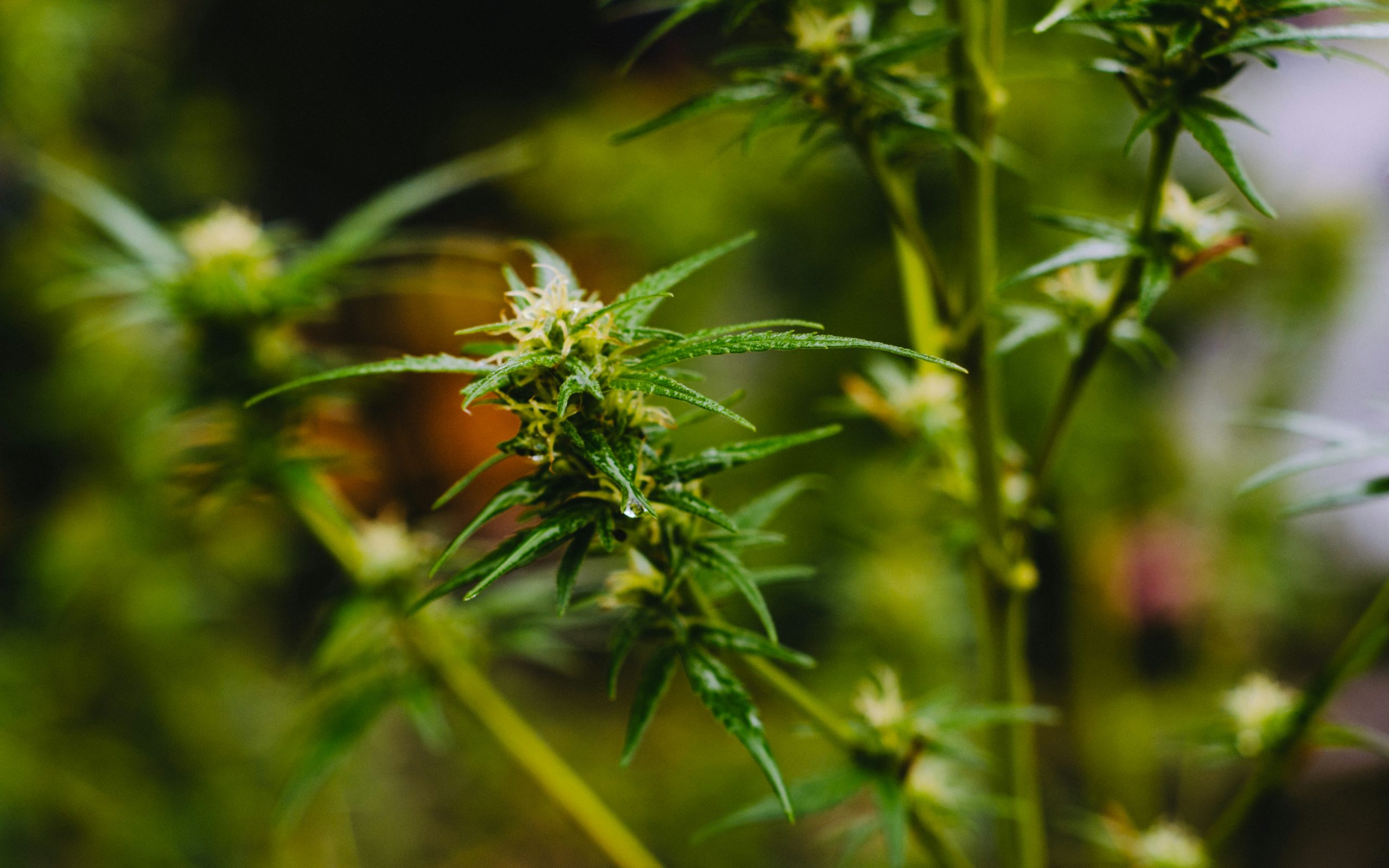Ever wondered what makes your favorite plants smell so good? Meet terpenes – the unsung heroes behind those delightful aromas. These tiny molecules are like nature’s perfume makers, tucked away in plant resins and essential oils. But, what are terpenes? Terpenes are the fragrant molecules found in every plant, weaving through their resins like invisible threads. Think of them as the VIPs of a plant’s essential oil, responsible for the unique essence that makes each botanical stand out.
Still curious about how to identify terpenes by smell and what they do to our senses? Well, you’re in for a treat! Let’s find out more about these mysterious scents and what their effects are on our mood and well-being!
How Do Terpenes Work?
Terpenes in cannabis aren’t just responsible for the unique scents and flavors of strains; they also play a crucial role in how cannabis affects our bodies. When you consume cannabis terpenes, they work much like cannabinoids. They enter the bloodstream, interacting with hormones and receptors throughout the body which include the brain, immune cells, glands, organs, and connective tissues.
Terpenes have an attraction to serotonin and dopamine systems in the brain, promoting feelings of happiness, relaxation, and improved sleep. The interaction between terpenes and these systems isn’t just for show. It can also influence the effects of other cannabinoids, such as THC, leading to a unique high for each strain.
Do Terpenes Determine the Sativa and Indica Profiles of Cannabis?
The classification of cannabis into indica, sativa, or hybrid categories is a common practice, often viewed in a straightforward manner by consumers and budtenders. Indicas are typically seen as relaxing with full-body effects, while sativas are perceived as more energizing, offering increased focus and a head-high sensation.
Now, let’s talk about terpenes weed – those aromatic compounds in cannabis that play a crucial role in shaping the effects of the plant. A common question arises: Do terpenes contribute to whether a strain is sativa or indica dominant? The answer is yes. Terpenes have the ability to influence how cannabinoids, like THC, interact with our brain.
Identifying Different Terpenes
When it comes to cannabis terpenes, scents and flavors take center stage. Learning how to identify various terpenes can significantly enhance your understanding of their role in shaping the distinct qualities of cannabis strains and appreciate their unique tastes and cannabis experience.
Limonene
- A bright, citrusy aroma.
- Second-most abundant terpene in cannabis.
- It is found in citrus fruits and used in cosmetics and cleaning products.
- Inhalation absorption promotes mood improvement, stress reduction, and immune support.
- Vaporization point: 348.8°F.
Myrcene
- The most common terpene in cannabis, making up to 65% of some strains.
- Earthy, musky aroma with hints of fruit or citrus in some strains.
- Dominant in indica strains, known for sedative effects.
- It is beneficial for pain relief, sleep aid, and inflammation reduction.
- Often used in cancer treatments.
Caryophyllene
- Predominant terpene with a spicy, herbal aroma.
- Found in cloves and hops.
- Potential relief for anxiety symptoms.
- Vaporization point: 266°F.
Linalool
- Spicy and floral notes are responsible for the classic marijuana smell.
- It is also found in lavender, mint, cinnamon, and coriander.
- Known for powerful relaxing properties.
- Offers anti-inflammatory, analgesic, and anxiolytic benefits.
- Aids in arthritis, depression, seizures, insomnia, and cancer.
Alpha-Pinene and Beta-pinene
● Pine-like aroma and flavor.
- Common in strains with high THC levels.
- Found in pine trees, rosemary, orange peels, basil, and parsley.
- Exhibit anti-inflammatory effects, used in treating arthritis and inflammatory conditions.
- It possesses bronchodilator properties, which are beneficial for asthma and bronchitis.
● Humulene
- It was first found in hops and is present in ginseng, sage, cloves, black pepper, and cannabis.
- Woody and earthy with a hint of spice.
- Early research suggests anti-proliferative properties against cancer cells.
- Acts as an appetite suppressant and a potential aid for weight loss.
- Reduces inflammation, fights bacterial infections, and relieves pain.
Why do Terpenes have such a Vivid Smell?
Terpenes, the organic compounds found in essential oils, are the aromatic architects behind the distinct scents of various plants like lavender, pine, and citrus fruits. Their vivid smells, easily recognized by our noses, result from their volatile nature – they readily evaporate into the air.
With over 20,000 different terpenes in nature, each possesses a unique odor determined by its molecular structure. For instance, limonene offers a citrusy aroma because its molecular makeup resembles the scent molecules found in citrus fruits. So, what do terpenes smell like? It depends on their molecular design.
Identifying terpenes by smell is like connecting the dots between unique scents and the building blocks of their molecular structures. It’s not just about pleasant aromas; it’s nature’s clever strategy. Terpenes, with their various scents, have a job – some are like floral invitations for bees (think lavender’s sweet scent), while others, like the strong whiff of pine needles, work as a “keep out” sign for pesky insects.
Difference Between Cannabinoids and Terpenes
| Characteristic | Cannabinoids | Terpenes |
| Definition | Diverse molecules in cannabis, some other plants, and the human body | Organic compounds in cannabis and various plants |
| Common Examples | THC, CBD | Varies widely, e.g., myrcene, limonene
|
| Source | Mainly in cannabis, some other plants | Abundant in almost all plants
|
| Aroma/Flavor Influence | Minimal impact on aroma/flavor | Significant influence on cannabis aroma/flavor
|
| Interaction with the Endocannabinoid System | Yes, interacts strongly | Yes, some interaction, but not as potent
|
| Psychoactive Effects | Yes, THC can produce intoxicating effects | Some may be psychoactive but typically not intoxicating |
Effects of Terpenes on the Body
Terpenes can have a significant impact on the body, influencing a range of physiological and psychological processes. While they are not unique to cannabis, they play a crucial role in shaping the overall effects of different strains. Here are some ways in which terpenes can affect the body:
Anti-inflammatory properties (Myrcene, Caryophyllene, Alpha-Pinene)
Myrcene, often found in indica strains, helps soothe inflammation, which can be particularly helpful for conditions like arthritis. Caryophyllene, by interacting with specific receptors, also fights inflammation and offers potential relief from chronic pain. Alpha-Pinene, known for its pine-like aroma, not only boosts alertness but contributes to the anti-inflammatory team, making it beneficial for respiratory issues such as asthma.
Muscle Relaxant (Myrcene)
Myrcene, in addition to calming inflammation, acts as a muscle relaxant, providing a two-in-one solution for those seeking relief from both inflammation and muscle tension. Strains with high myrcene content become go-to options for physical recovery and overall relaxation.
Antidepressants (Limonene, Caryophyllene)
Limonene, with its uplifting citrus scent, offers more than a pleasant aroma—it may act as a natural antidepressant by reducing stress and lifting mood. Caryophyllene adds to this by positively influencing mood through its interaction with the body’s endocannabinoid system. These terpenes showcase cannabis as not just a physical remedy but a potential mood enhancer, too.
Energy Booster (Alpha-Pinene)
Alpha-Pinene, with its refreshing pine fragrance, steps in as a natural energy booster. Beyond countering sedative effects, strains rich in Alpha-Pinene become a preferred choice for those seeking a more alert and energized cannabis experience.
Analgesic (Caryophyllene, Linalool)
Caryophyllene, celebrated for its anti-inflammatory properties, also acts as an analgesic, potentially offering effective pain relief. Linalool, with its calming floral notes, complements this effect, making it a valuable terpene for those managing pain while embracing tranquility.
Appetite Suppressant (Humulene)
Humulene, present in both hops and cannabis, reveals its potential as a natural appetite suppressant, positioning itself as a helpful companion for individuals focused on weight management. As we explore cannabis terpenes effects, humulene stands out not just for its contribution to the terpene mix but also for its diverse benefits, adding an intriguing element to the journey toward overall well-being.
Choosing the Right Terpenes
- Limonene
When to Choose: Pick limonene for a mood boost and stress relief. Its citrusy aroma adds a touch of cheerfulness to your experience.
- Myrcene
When to Choose: Opt for myrcene when you need to unwind and relax. It is ideal for calming effects and potentially helps with sleep.
- Caryophyllene
When to Choose: Go for caryophyllene for pain relief and possible anxiety reduction. It’s your ally in seeking a soothing experience.
- Linalool
When to Choose: Choose Linalool for relaxation and stress relief. Its floral notes create a calming atmosphere.
- Alpha-Pinene and Beta-Pinene
When to Choose: Select pinene-rich strains for daytime focus and improved breathing. Ideal for staying alert and energetic.
- Humulene
When to Choose: Opt for humulene if you’re aiming to curb your appetite. Also, consider it for potential anti-inflammatory benefits.
Conclusion
It’s fascinating how these little aromatic wonders don’t just make our favorite strains smell unique but also play a starring role in how they make us feel. But it’s not just about the scents; it’s about the terpenes benefits each one brings to the table, contributing to everything from relaxation to pain relief and even helping with appetite control.
And for those seeking premium quality indica and sativa products, look no further than HOTBOX, where a diverse variety awaits your exploration. Contact us at (818) 686-2942 or email us at hello@smokehotobox.com if you have any questions about our products. Whether it’s the calming embrace of indica or the invigorating lift of sativa, your cannabis journey finds a home at HOTBOX!





